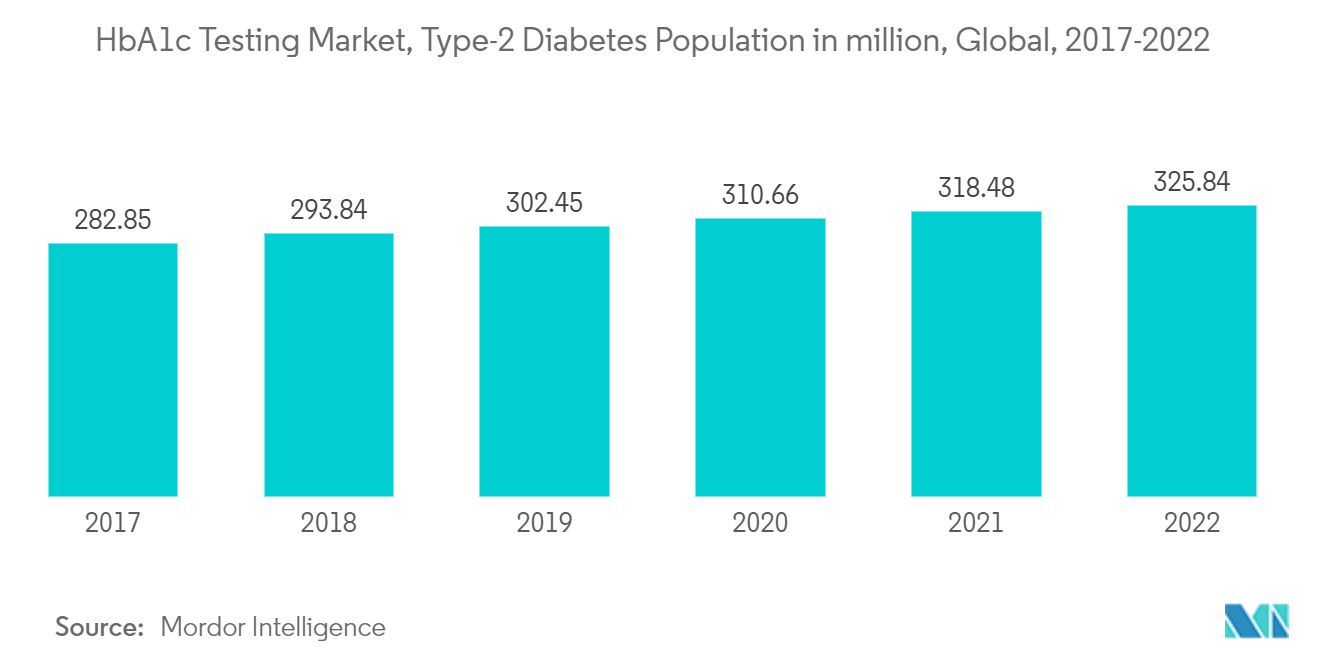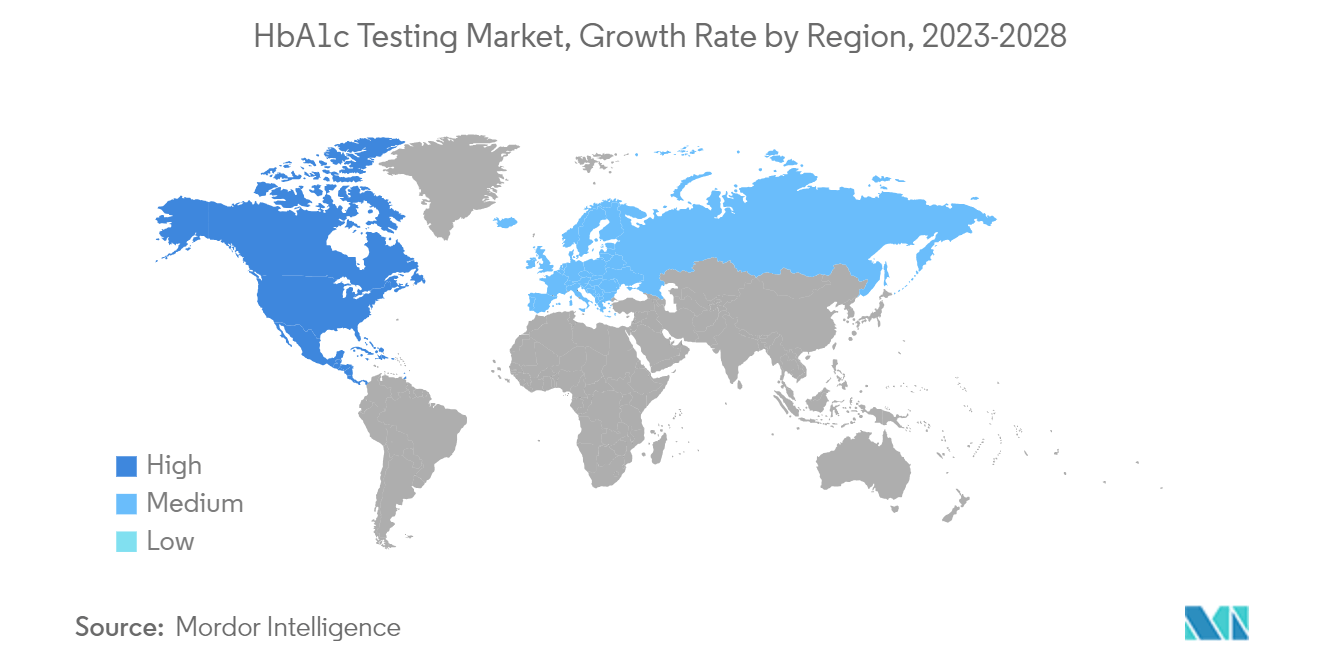Market Trends of HbA1c Testing Industry
Rising Diabetes Prevalence is anticipated to boost the market studied
The diabetes population is expected to increase, registering a CAGR greater than 1.9% over the forecast period.
As per the International Diabetes Federation's latest estimates, about 10% of all diabetes cases are type-1, and the remaining are type-2; the adult diabetes population is approximately 537 million, and this number is going to increase by 643 million in 2030. The rate of newly diagnosed cases of diabetes is seen to increase, mainly due to obesity, unhealthy diet, and sedentary lifestyle. Diabetes can be detected using HbA1c tests, and an appropriate treatment regimen can be implemented. In 2022, the WHO Global Diabetes Compact outlined five diabetes targets to reach by 2030, focused on addressing metabolic risks, access to medication, and diagnosis. The outlook for a healthy future is further marked by sustained progress in strategies designed to remediate diabetes through control of calorie intake, physical activity, and medication.
The blood glucose data available from HbA1c is used in prescribing and monitoring medicines for diabetes and prediabetes, along with exercise and diet. The HbA1c is recommended to be performed at least twice a year in diabetes patients with stable blood glucose levels. The American Diabetes Association has recommended glycated hemoglobin as a possible substitute for fasting blood glucose for the diagnosis of diabetes.
HbA1c is an important indicator of long-term glycemic control as it provides a cumulative glycemic history of the preceding two to three months. Elevated HbA1c levels are a significant risk factor for coronary heart disease and stroke in people with or without diabetes. Furthermore, new product launches in the market are expected to facilitate the market over the forecast period. For instance, in May 2022, OmegaQuant launched an HbA1c blood sugar at-home testing kit, enabling users to test their hemoglobin A1c level to metabolize glucose. Typically, HbA1c testing requires a blood draw and lab analysis, but OmegaQuant’s HbA1c test allows for a simple finger stick so users can take the test on their own time and at their convenience, at home.
Owing to the rising diabetes prevalence, government initiatives and product launches in the market for HbA1c are expected to grow over the forecast period.

The Asia-Pacific region is Expected to Witness Highest Growth Rate Over the Forecast Period
The Asia-Pacific region is expected to grow, registering a CAGR of more than 4.5% in the market during the forecast period.
In Asia-Pacific, deaths attributable to high blood glucose due to type-2 diabetes increased among lower-middle and low-income Asia-Pacific countries and territories, and about half of them are undiagnosed and unaware of developing long-term complications. According to the International Diabetes Federation's latest estimates, 90 million adults in the age group of 20-79 are living with diabetes in the Southeast Asia Region, which is projected to increase to 113 million by 2030 and 152 million by 2045.
Countries like India and China have been recognized as potential developing markets due to the growing diabetic population in this region. These markets are associated with some challenges, like slow economic growth and increased competition. Effective strategies are needed to diagnose and manage patients with diabetic complications to reduce the healthcare resources and economic burden. According to the National Metabolic Disease Clinical Research Center, more hospitals in China will establish National Metabolic Management Centers (MMC) as part of their exploration of a new model of diabetes treatment.
Diabetes has been identified as a healthcare priority by the Ministry of Health, Labour, and Welfare in Japan. The high prevalence of type 2 diabetes is associated with a significant economic burden. Costs increase with an increasing number of complications. Well-organized medical insurance systems cover all medical fees for diabetes mellitus, and diabetics can visit doctors freely in Japan.
The region is witnessing a significant increase in the number of generic manufacturers, thereby giving a boost to the growth of the market studied.


